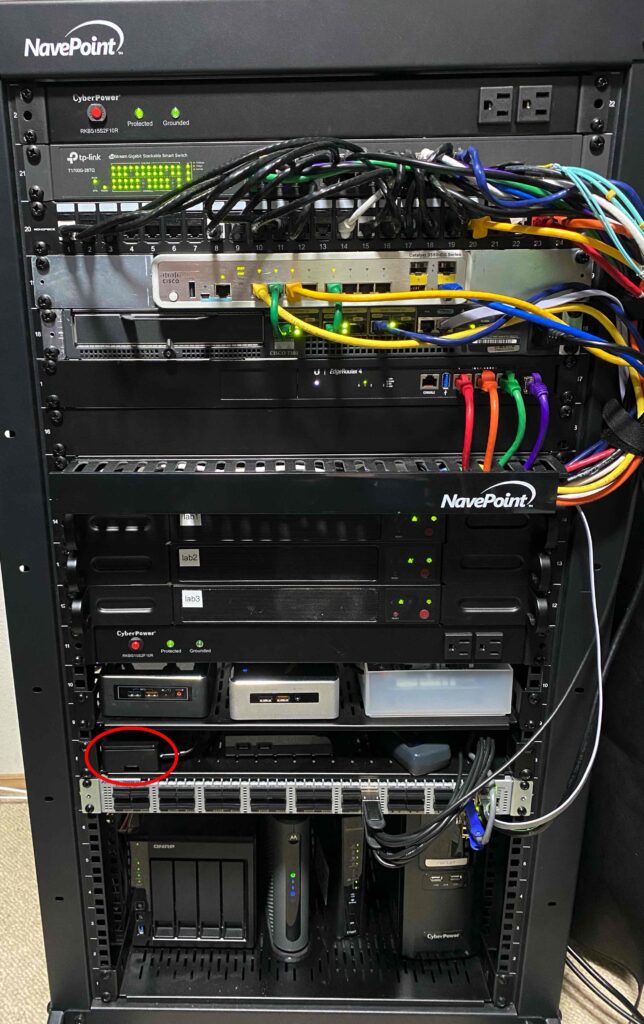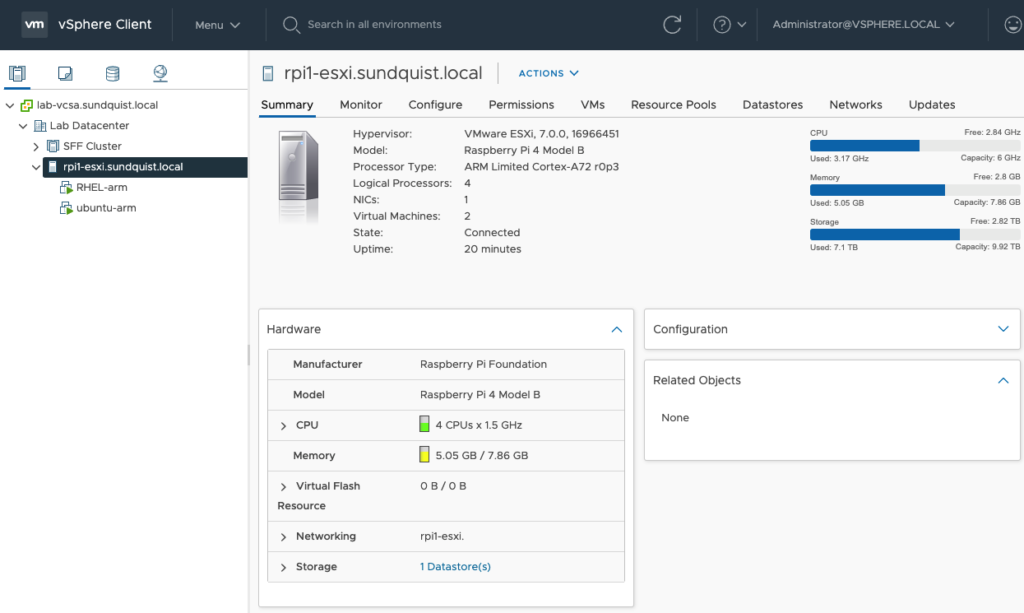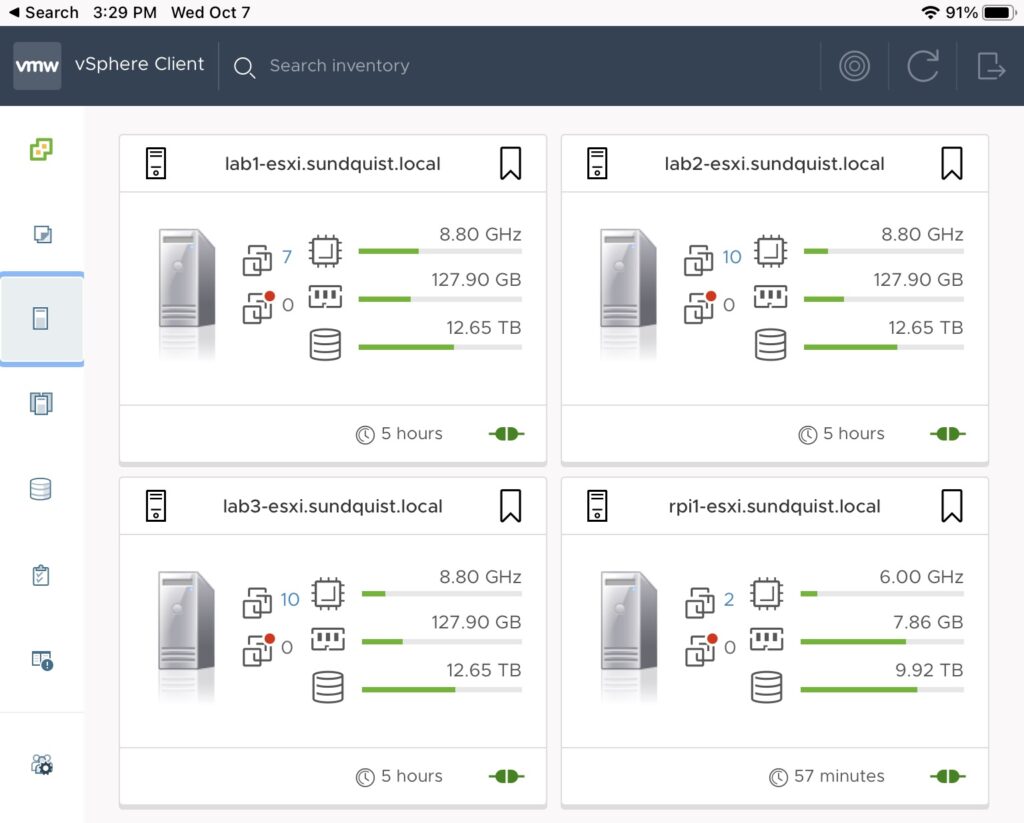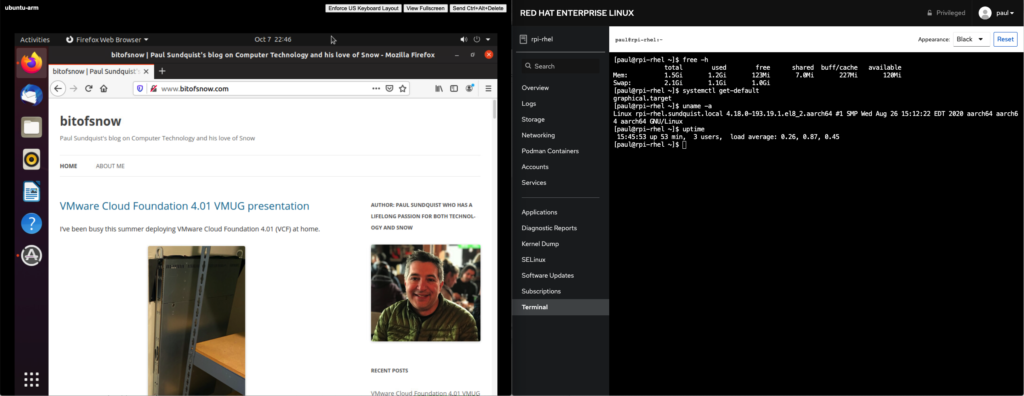Over the summer I deployed a large enterprise SuperMicro Server with a half terabyte of RAM and 36 cores provided by 2 Intel Xeon E5-2683 v4’s. I deployed a nested VMware Cloud Foundation 4 with Tanzu Kubernetes Grid on this system and I’m still learning. My last blog post links to a YouTube presentation on my experience

I learned through Twitter yesterday morning that VMware released an ESXi on Arm Fling free technology preview. I ordered a new Raspberry Pi 4B with 8GB of RAM from Amazon in the morning and had ESXi live on the system by the end of the day. The Raspberry Pi is close to the size of one of the Intel Xeon processors in the SuperMicro VMware Cloud Foundation Server I deployed over the summer. The electrical power requirements for the Raspberry Pi is insignificant compared to the SuperMicro enterprise server running VMware Cloud Foundation.

Kit Colbert published a blog last week describing use cases for this game changing technology. In addition, he presented on it in the “The Datacenter of the Future [HCP3004]” session last week during VMworld. VMworld session recordings are available through the vmworld.com site and registration is free. I was excited to gain hands on experience.
WOW – this technology is amazing. After deploying ESXi to a USB memory stick, I connected this host to my vCenter server. Next I created and connected an NFS datastore from my QNAP NAS to the host.

I pulled out my iPad mini and saw the new host in the vSphere Client fling.

I downloaded and deployed the ARM version of Ubuntu 20.04 and RHEL 8.2 as VM’s. I compiled VMware Tools on the Ubuntu VM and installed the GUI (graphical.target) to both Linux VM’s. I still have a little memory to spare on the Raspberry Pi for another VM. Both of the VM’s were responsive even with the GUI. It is hard to tell that ESXi and Linux is running on ARM since the Operating Systems are unchanged. The largest obstacle is the ARM requirement for software. I now understand through this experience why Apple is rumored to release a MacBook with an ARM processor.

Over the summer I learned about the reimagined VMware Cloud Foundation from the top down with Tanzu Kubernetes Grid, NSX-T, vSAN, and SDDC Manager. Now with ESXi on ARM I am learning about the next chapter of VMware Cloud Foundation. If you always wanted a VMware vSphere home lab this is the most inexpensive path to get started.